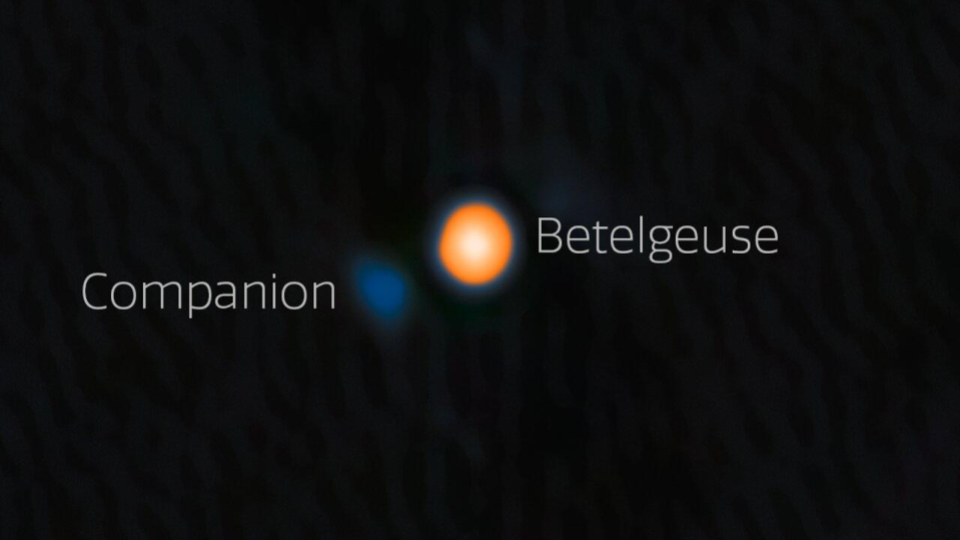
Last December a paper in the Astronomical Journal led by Morgan MacLeod used decades of data we have on Betelgeuse’s changing brightness to predict that the star has a low mass companion, possibly still in the process of forming, that orbits it every 5.775 years. As luck would have it, last year was when then companion star should be well separated from Betelgeuse on the sky and a group of astronomers led by Steve Howell was able to get telescope time on the Gemini North telescope to see what they could see.
And they quite possibly saw a blob that could be the predicted star at roughly the predicted distance from Betelguese’s surface.
In a rare moment of excellence in naming, this blob is being called the Betelbuddy.
Betelguese is a massive star that is closing in on the end of its very short life. In the next tens of thousands to hundreds of thousands of years, it will explode, and assuming it’s the right time of year, we might even be able to see that supernova as a day time object. In star forming regions, like Orion, the largest stars will actually live and die before the smaller stars get their mass together and star fusing Hydrogen.
And this little star has not yet got it’s stuff together. With about 1.5 times the mass of the Sun, it has the potential to become a hot bright star one day, but… instead of doing that.. It’s just going to get eaten. Currently Betelbuddy is orbiting in the outer layers of Betelguese’s atmosphere, and drag from the atmosphere where pull Betelbuddy into Betelguese, where it will get torn up and devoured.
If what we’re seeing is real.
This is a super low signal detection, and it could easily be a false detection. Unfortunately, they didn’t get enough different nights of data to see the object clearly orbiting, and the images were taken while Betelbuddy was heading closer and closer to Betelguese on the sky. This new years, when we look at Betelguese shining from Orions shoulder, we’re going to see it and Betelbuddy pretty much as close as they get on the sky, and we’re going to have to wait until 2027 to see Betelbuddy, if it’s there, come out of the glare of Betelguese.
What is wild to me about these observations is how many people have observed Betelguese with so many different extremely high resolution systems without ever seeing this buddy before. Part of this is just the bad luck of how the orbits align in time. Around 4 out of every 5.775 years, Betelbuddy is lost in the glare of Betelguese. We can only see Betelguese part of the year because of our orbit around the sun. This combination of our orbit and Betelbuddy’s orbit make observing Betelbuddy annoyingly hard.
That next time Betelbuddy is easiest to see? It actually occurs in the Summer of 2027… I’m just hoping it is far enough from Betelguese in the spring and fall that it can be seen and it’s motion can be observed.
